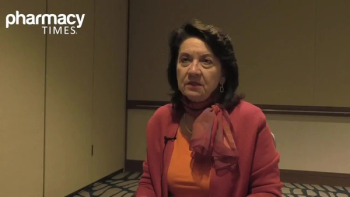
Health Care Innovation in Rural Areas May Lead to Better Access to Services
Population migration to more urban locales, and rural hospital closures are some factors increasing the challenges of health care access to patients and pharmacists in remote areas of the country. Innovation advocated by the National Rural Health Association (NRHA) may provide keys to improving access to health care services.
Population migration to more urban locales, and rural hospital closures are some factors increasing the challenges of health care access to patients and pharmacists in remote areas of the country. Innovation advocated by the National Rural Health Association (NRHA) may provide keys to improving access to health care services.
In an address at the AHSP (American Society of Health-System Pharmacists) 54th Midyear Clinical Meeting & Exhibition in Las Vegas, Brock Slabach, MPH, FACHE, senior vice president of NRHA, said rural populations are becoming older, sicker, and poorer, as more people shift to suburban and urban areas.
The median age of adults living in rural areas of the United States is 51 years, compared with a median age of 45 years for adults living in urban areas. Rural areas have a higher number—18.4% of the population—aged 65 years and older, versus 14.5% of the same population in urban areas.
The closure of 118 rural hospitals and clinics across the country, since 2010, have created a health care crisis, Slabach said, and more closures are expected.
“Patients are more likely to die with a rural hospital closure, by 5.9%,” said Slabach, adding that no impact on the urban mortality rate is being seen with hospital closures in cities. He said the longer time it takes a rural patient to reach another hospital may be critical, while urban patients likely have other nearby options.
Some health care policies are creating negative financial pressure on health care providers, according to Slabach. In fact, he said, 48% of rural providers have a negative operation margin, and some states are falling further behind.
“One of the important things that we need to address is economic [opportunity] in rural areas,” said Slabach.
Notably, revenue pressures have led a decline in rural maternity services, with 155 programs lost since 2011. Of those 155 shuttered programs, 134 were dropped from hospitals that remain open. The loss of these programs has increased travel time for women seeking maternity care. In some cases, a drive of more than an hour is needed to access these services.
“This has become a national tragedy, not only in rural areas, but in urban areas,” said Slabach, citing infant mortalities. “This is an embarrassment that needs to be corrected.”
Other patient barriers to accessing health care in remote communities include lower provider recruitment and retention rates, and provider retirement and burnout rates, as well as social detriments, such as food insecurity.
Overall, rural Americans are at higher risk for obesity, diabetes, and smoking, according to Slabach. Incidences of heart disease, chronic lower respiratory disease, and unintentional injuries are higher in rural areas, and there are disparities in treatment options for patients with opioid use disorder.
According to Slabach, there is a widening gap in life expectancy between rural and urban dwellers. Rural residents now have a lower life expectancy of nearly 3 years.
Slabach said the future of rural health lies In payment innovation, delivery system innovation, and investing in infrastructure investment, such making repairs where needed.
Payment models must be examined to improve access to care, according to Slabach. Incentivizing with alternative payment models can lead to higher-value care, he said, and rural care providers investing in primary care networks is critical to their success.
“Payment innovation is about accountable care organizations, global budgets, and CMS rural rollout,” said Slabach.
Delivery system innovation is about new provider types, such as community outpatient hospitals. Slabach said these facilities don’t require the same overhead costs as inpatient hospitals, but would help provide care needed.
Technology also plays a large role in increasing health care access to remote communities. Electronic health record integration is “crucial” to an effective clinical integration, which rural providers need to improve access to health care to their patients, Slabach said. Virtual care may also help improve access to health care in remote communities, and at a low cost.
In addition, health care advocates can better educate policy makers on the unique needs of their communities. Strategic governance should be informed by the current research relevant to rural areas, Slabach said.
NRHA and ASHP are advocating on behalf of rural health care providers, according to Slabach. The organizations are focusing on key areas: reimbursement, health care reform, 340B, drug pricing and shortages, regulatory relief, and new models of care.
One important policy goal is to expand pharmacists’ ability to treat opioid addiction for the 20% of the United States population living in rural areas.
“We stand with ASHP in that effort,” said Slabach.
REFERENCE
Slabach B. The Landscape of Rural Health. Presented at: American Society of Health-System Pharmacists (ASHP) Midyear Clinical Meeting & Exhibition, Las Vegas, NV. December 8, 2019.
Newsletter
Stay informed on drug updates, treatment guidelines, and pharmacy practice trends—subscribe to Pharmacy Times for weekly clinical insights.

















































































































































































































